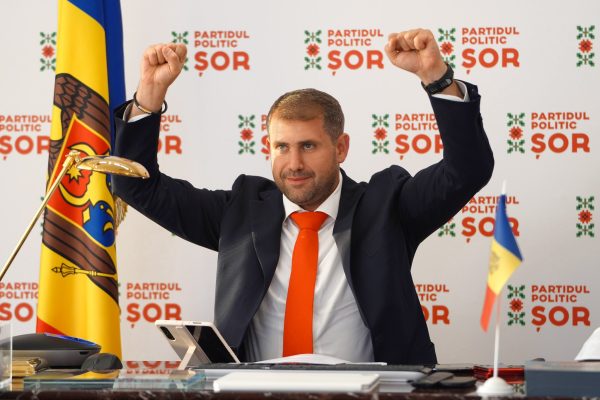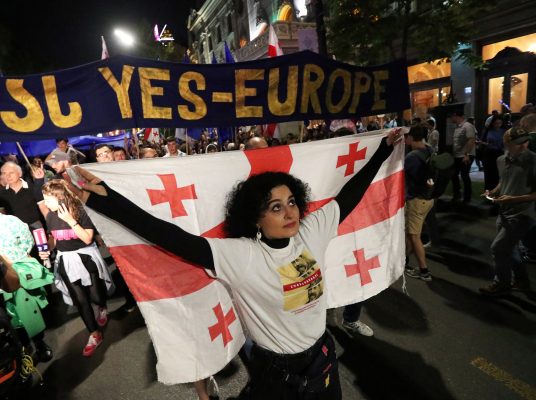There are not many who doubt Ukraine’s commitment to the democratic process. It has continued to hold votes since Russia’s initial unprovoked aggression in 2014, which resulted in the annexation of Crimea and an extended state of war in Donbas. But the full-scale invasion of February 24, 2022, has raised profound legal and practical problems.
The parliamentary vote should be held in October of this year and the presidential election on March 31 next year. But with 17% of the country occupied by the invader and with Ukrainian-held territory regularly under fire or washed away by Russian-generated floods, the practicability of popular votes is in question.
First, the legal aspect. Ukraine is subject to martial law that explicitly says elections cannot be held until it is lifted. To change this means changing the constitution, and that would not be easy.
Second, comes voter security and practicability. The security of voters, election officials, and observers at voting places is vital. Russian forces have shown no hesitation in shelling civilian infrastructure and might even welcome the chance to attack voters as they cast ballots. As for the occupied territories, even areas liberated by the armed forces would neither be the time nor conditions for campaigning.
Some settlements have suffered such extensive damage that they lack the necessary infrastructure to hold elections, and voters’ lists will be out of date. Many have become ghost communities.
There are also political considerations. Holding both votes on in March 2024 might help Volodymyr Zelenskyy and his Servant of the People party. His popularity far outstrips that of the party, which polling suggests would struggle to retain its majority in the Rada. Its support might be boosted if the vote was more closely linked to the presidential race. Conversely, holding elections in October might help the ruling party by restraining the opposition’s critique of its record, as the demands of wartime would take precedence over party interests.
But there are clearly much broader problems beyond the political. Many Ukrainians have left their homeland. More than 8 million Ukrainian refugees are registered across Europe alone — about 20% of the country’s population, and 60% of them are over 18 and eligible to vote.
There are also about 6 million internally displaced persons (IDPs) in Ukraine, not all of whom have registered at a new place of residence. Even with Resolution No. 88, which permits local authorities to accept IDP registration certificates or residential leasing contracts to link electoral addresses to places of residence, registering them all will be difficult. As for the occupied territories, even areas liberated by the armed forces would neither be the time nor conditions for campaigning.
E-elections might be an option, and since the pandemic MPs have been discussing online voting, for example through the “state-in-a-smartphone” app Diia, which gives 19 million Ukrainians access to 120 government services. But the stakes are too high for such a large-scale experiment.
There are further serious issues. Elections would have to be secured from Russia’s meddling, which raises legal and human rights issues. Four draft laws have been registered in parliament – one from the Servant of the People and Holos parties, which would bar any candidate who at the time of martial law’s introduction was elected at any level from a party which is currently banned. Like some other post-Soviet countries, Ukraine banned the Communist party in 2015, and a further 12 pro-Russian parties were banned in 2022.
“Parliament and local councils may be infiltrated with ‘good-old’ Kremlin agents elected under a new political brand, for example in a party called ‘For Peace,’” Halyna Yanchenko, a Servant of the People MP who drafted one of the proposed laws, told LB.ua. That of course raises potentially troubling civil rights questions.
Alina Zahoruyko, chair of the Verkhovna Rada subcommittee on elections, told Zaborona that MPs were also developing a draft law to designate areas where elections won’t be held for a specific period of time. For Crimea and the occupied territories of Donetsk and Luhansk regions, an electoral moratorium until 2030 may be introduced, LB.ua reported.
Currently, the idea of elections in fall 2023 has little support in Ukraine. Zelenskyy insists he will wait until martial law is lifted, but it is hard to predict what might happen if a war of attrition lasts beyond the March 2024 date scheduled for Ukraine’s presidential elections, or even until November next year.
If the war continues, Ukraine is likely to have to meet the challenge and hold elections at some point next year. That, after all, is what we’re fighting for.
Elena Davlikanova is a Democracy Fellow with the Center for European Policy Analysis (CEPA.) Her work is focused on analyzing opportunities for Ukraine-Russia reconciliation with regard to fascism and totalitarianism in Russia and their effects on Russia. She is an experienced researcher, who in 2022 conducted the studies ‘The Work of the Ukrainian Parliament in Wartime’ and ‘The War of Narratives: The Image of Ukraine in Media.’
Europe’s Edge is CEPA’s online journal covering critical topics on the foreign policy docket across Europe and North America. All opinions are those of the author and do not necessarily represent the position or views of the institutions they represent or the Center for European Policy Analysis.





